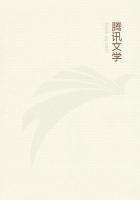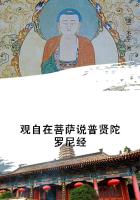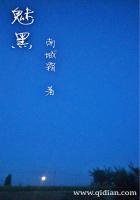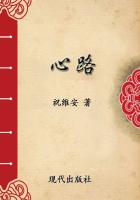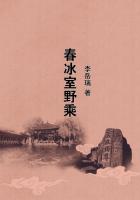Finding, while I was on a visit, that I was within a reasonable distance of Ambresbury, I sent a servant over to that town, and procured several diving specimens of loaches, which he brought, safe and brisk, in a glass decanter. They were taken in the gullies that were cut for watering the meadows. From these fishes (which measured from two to four inches in length) I took the following description: 'The loach, in its general aspect, has a pellucid appearance: its back is mottled with irregular collections of small black dots, not reaching much below the linea lateralis, as are the back and tail fins: a black line runs from each eye down to the nose; its belly is of a silvery white; the upper jaw projects beyond the lower, and is surrounded with six feelers, three on each side; its pectoral fins are large, its ventral much smaller; the fin behind its anus small; its dorsal fin large, containing eight spines; its tail, where it joins to the tail-fin, remarkably broad, without any taperness, so as to be characteristic of this genus: the tail-fin is broad, and square at the end. From the breadth and muscular strength of the tail, it appears to be an active nimble fish.'
In my visit I was not very far from Hungerford, and did not forget to make some inquiries concerning the wonderful method of curing cancers by means of toads. Several intelligent persons, both gentry and clergy, do, I find, give a great deal of credit to what was asserted in the papers: and I myself dined with a clergyman who seemed to be persuaded that what is related is matter of fact; but, when I came to attend to his account, I thought I discerned circumstances which did not a little invalidate the woman's story of the manner in which she came by her skill. She says of herself 'that, labouring under a virulent cancer, she went to some church where there was a vast crowd: on going into a pew, she was accosted by a strange clergyman; who, after expressing compassion for her situation, told her chat if she would make such an application of living toads as is mentioned she would be well.' Now is it likely that this unknown gentleman should express so much tenderness for this single sufferer, and not feel any for the many thousands that daily languish under this terrible disorder? Would he not have made use of this invaluable nostrum for his own emolument; or, at least, by some means of publication or other, have found a method of ****** it public for the good of mankind ? In short, this woman (as it appears to me) having set up for a cancer-doctress, finds it expedient to amuse the country with this dark and mysterious relation.
The water-eft has not, that I can discern, the least appearance of any gills; for want of which it is continually rising to the surface of the water to take in fresh air. I opened a big-bellied one indeed, and found it full of spawn. Not that this circumstance at all invalidates the assertion that they are larvae: for the larvae of insects are full of eggs, which they exclude the instant they enter their last state. The water-eft is continually climbing over the brims of the vessel, within which we keep it in water, and wandering away: and people every summer see numbers crawling out of the pools where they are hatched, up the dry banks. There are varieties of them, differing colour; and some have fins up their tail and back, and some have not.
Letter XIX
To Thomas Pennant, EsquireSelborne, Aug. 17, 1768.
Dear Sir,I have now, past dispute, made out three distinct species of the willow-wrens (motacillae trochili) which constantly and invariably use distinct notes. But, at the same time, I am obliged to confess that I know nothing of your willow-lark.* In my letter of April the 18th, I told you peremptorily that I knew your willow-lark, but had not seen it then: but, when I came to procure it, it proved, in all respects, a very motacilla trochilus; only that it is a size larger than the two other, and the yellow-green of the whole upper part of the body is more vivid, and the belly of a clearer white. I have specimens of the three sorts now lying before me; and can discern that there are three gradations of sizes, and that the least has black legs, and the other two flesh-coloured ones. The yellowest bird is considerably the largest, and has its quill-feathers and secondary feathers tipped with white, which the others have not. This last haunts only the tops of trees in high beechen woods, and makes a sibilous grasshopper-like noise, now and then, at short intervals, shivering a little with its wings when it sings; and is, I make no doubt now, the regulus non cristatus of Ray, which he says 'cantat voce stridula locustae.' Yet this great ornithologist never suspected that there were three species.
(*Brit. Zool. edit. 1776, octavo, p. 381.)Letter XX
To Thomas Pennant, EsquireSelborne, October 8, 1768.
It is, I find, in zoology as it is in botany: all nature is so full, that that district produces the greatest variety which is the most examined. Several birds, which are said to belong to the north only, are, it seems, often in the south. I have discovered this summer three species of birds with us, which writers mention as only to be seen in the northern counties. The first that was brought me (on the 14th of May) was the sandpiper, tringa hypoleucus: it was a cock bird, and haunted the banks of some ponds near the village; and, as it had a companion, doubtless intended to have bred near that water. Besides, the owner has told me since, that, on recollection, he has seen some of the same birds round his ponds in former summers.
The next bird that I procured (on the 21st of May) was a male red-backed butcher bird, lanius collurio. My neighbour, who shot it, says that it might easily have escaped his notice, had not the outcries and chattering of the white-throats and other small birds drawn his attention to the bush where it was: its craw was filled with the legs and wings of beetles.
The next rare birds (which were procured for me last week) were some ring-ousels, turdi torquati.

